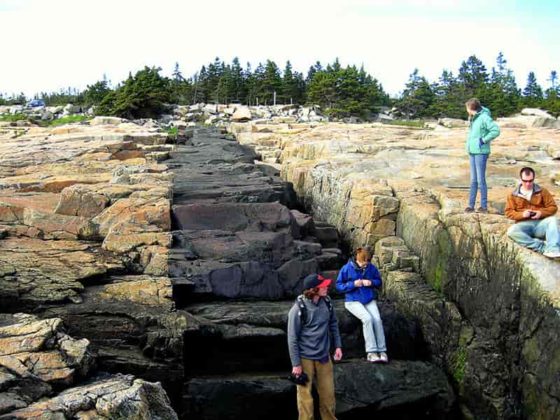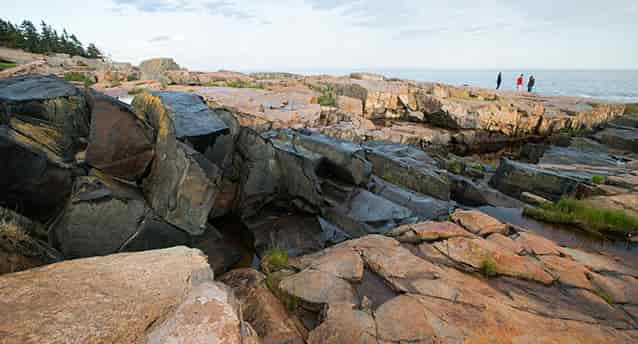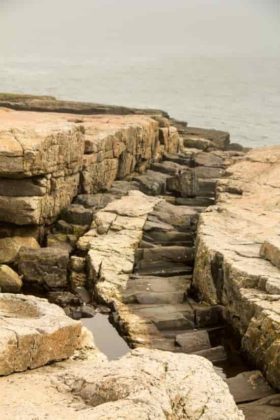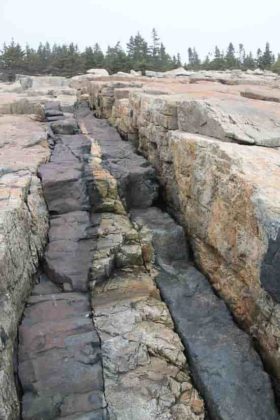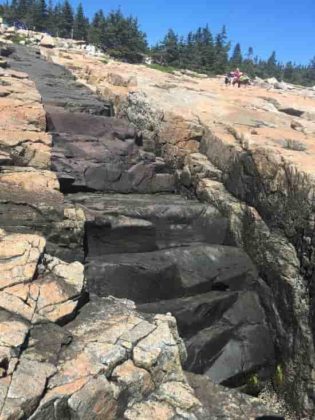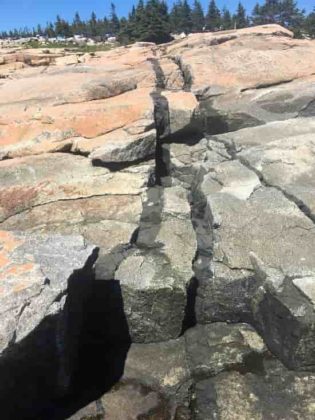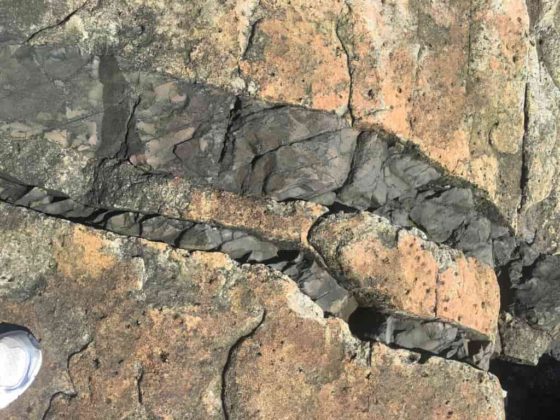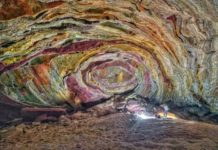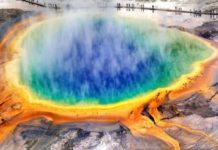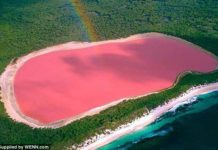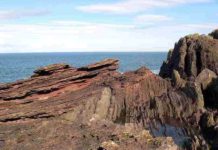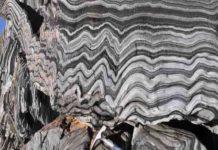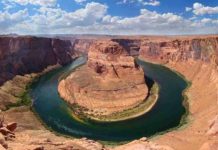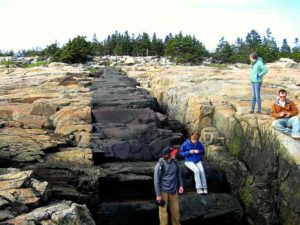
What is an intrusive igneous rock?
Intrusive, or plutonic, igneous rock forms when magma remains inside the Earth’s crust where it cools and solidifies in chambers within pre-existing rock. The magma cools very slowly over many thousands or millions of years until is solidifies. Slow cooling means the individual mineral grains have a very long time to grow, forming a rock with large, visible crystals
Acadia Bedrock Formation
The landscape that we know as Acadia had its beginnings more than 500 million years ago, when mud, sand, and volcanic ash were deposited in an early ocean. With time these sediments were buried, and pressure turned them to rock. Forces deep within the earth and tectonic (plate) activity deeply buried, heated, and squeezed this rock, changing it into the Ellsworth Schist, a metamorphic rock characterized by contorted, thin bands of white and gray quartz and feldspar, and green chlorite. It is the oldest rock known in the Mount Desert region.
The combined forces of erosion and the shifting of the rigid plates that make up the earth’s crust (tectonics) brought the deeply buried Ellsworth Schist to the earth’s surface. Approximately 450 million years ago, when a micro-terrane (mini-continent) called Avalonia collided with North America, this schist formed a platform on which sand and silt accumulated. Burial hardened these fine-grained deposits, creating the Bar Harbor Formation, a sequence of brown to gray bedded, or layered, sandstone and siltstones. Simultaneously with the creation of the Bar Harbor Formation, volcanoes erupted in the region. Volcanic flows and ash accumulated in the ocean basin, and formed the light-colored Cranberry Island Volcanics and deposited layers of ash in the developing Bar Harbor Formation.
A complex series of events led to the intrusion of several different types of molten, or igneous, rocks. The intrusive rocks cooled beneath the earth’s surface, allowing the crystals of various minerals to form and grow. Each rock type is composed of a unique set of minerals. The first and oldest is a gabbro. This rock is dark in color and is made up of iron-rich minerals.
The granites of Mount Desert Island are approximately 420 million years old. Because their mineralogy is so similar, the granites are identified by the size of individual mineral grains and the composition of the scattered dark minerals present. One of the oldest granites to appear was the Cadillac Mountain Granite, the largest granite body on the island. It oozed up through existing rocks, stressing and fracturing the overlying bedrock and causing large chunks to fall into the molten magma body. Some chunks of bedrock melted in the intense heat, while others were suspended in the magma. When the granite cooled deep in the earth, these blocks remained, surrounded by crystallized granite. This region of granite and broken rock, called the shatter zone, is still visible on the eastern side of the Cadillac Mountain Granite. A medium-grained granite formed to the west of the Cadillac Mountain Granite.
Later volcanic activity injected diabase, a fine-grained, black igneous rock into the granites and surrounding rocks. These diabase bodies, or dikes, can be seen along the road to the summit of Cadillac Mountain and on the Schoodic Peninsula.
Little record of the following several hundred million years remains. Erosion wore away the rocks covering the large granite bodies, bringing them to the earth’s surface. The same process removed much of the softer rock surrounding the granite, leaving behind resistant granitic mountains ringed by lowlands. Streams ran between the ridges, and a succession of plant and animal life inhabited the region.
Intrusive Basalt Dike
There are 2 rock types of rocks; granite and diabase. The larger, pale colored rock is a large granitic pluton. It formed as a massive, slow-cooling magma chamber in the Devonian Period. Granites in this area formed after the collision of an island arc with North America; this collision triggered one of the pulses of mountain-building represented in the Appalachians called the Acadian Orogeny.
The dark rock is a diabase, formed almost 200 million years later. After the Acadian Orogeny, North America collided with Europe and Africa to form the supercontinent Pangaea. Then, at the end of the Triassic, those continents pulled apart, opening up cracks in the crust that filled with mafic magmas. The dark rock here is called a diabase – a term for mafic rocks that formed small crystals as they were cooling. It cross cuts the granite, showing that the dike is the younger rock – the granite had to be there fore the dike to fracture it.
Photos
Reference:


